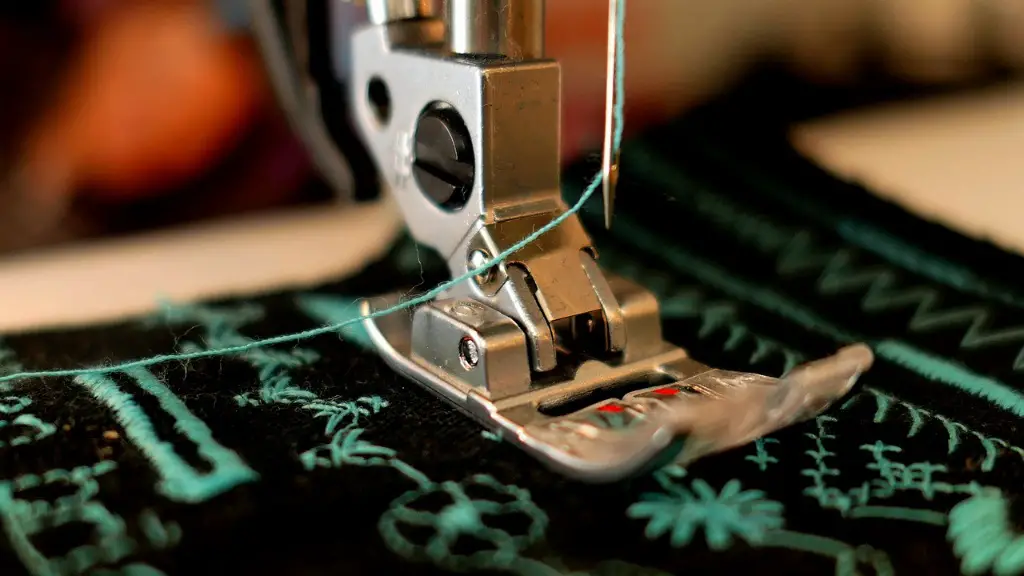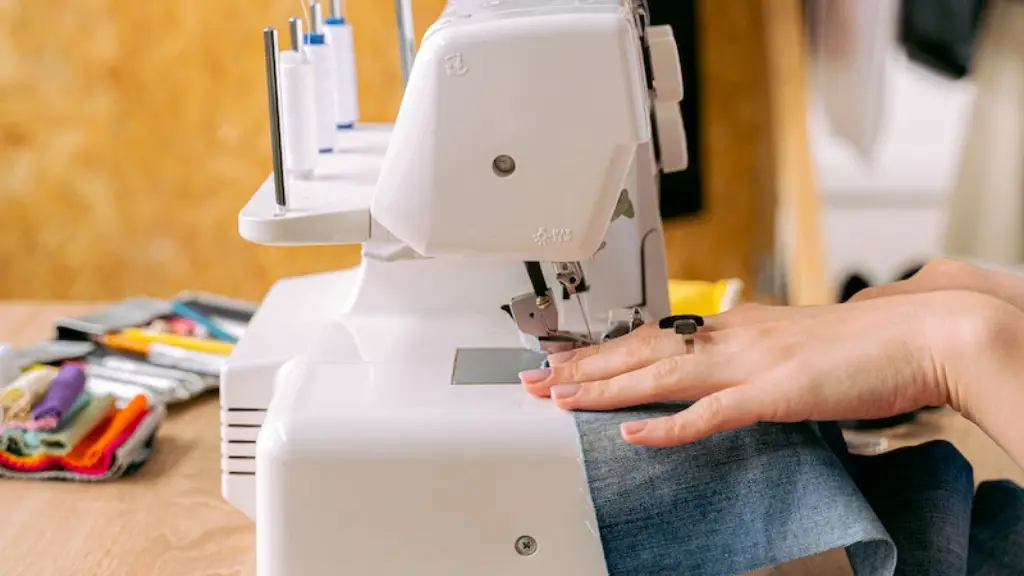Steps to Fix a Sewing Machine Thread Tension
Thread tension is one of the most important aspects of machine sewing. If the tension is too loose, the thread won’t hold and can be prone to snagging, while if it is too tight, the stitches can be too tight and may pull when you try to sew. Adjusting the tension on a sewing machine is something you should know how to do if you’re using a sewing machine, so it’s important to get it right.
The first step is to make sure that the machine is in good working condition. Check the bobbin, bobbin case, top tension disc and thread guide. If any of these parts are not working properly, it can cause the tension to be off. Make sure to clean any lint or debris that might be on the machine, as this can also cause tension problems.
Next, check the tension discs. The top tension disc should be tightened until it is snug, but should not be so tight that you can’t adjust it. The bobbin case should be threaded properly according to the manufacturer’s instructions, and the bobbin should be filled with quality thread. Once the bobbin and bobbin case are set up correctly, you can begin to adjust the tension.
Adjusting the tension is done by turning the tension screw located on the top of the machine. Turning the tension screw clockwise will increase the tension, while turning it counter-clockwise will decrease the tension. It is important to make gradual adjustments and test the tension each time, to make sure it is not too tight or too loose.
When correcting the tension, it is best to start with the top thread. The top thread should be tensioned so that it holds the fabric firmly but still moves easily. To check the tension on the top thread, pull the fabric away from the needle. The edge of the top thread should not be visible and should be between two-thirds and three-quarters of an inch away from the fabric. If the edge of the thread is visible, the tension may need to be tightened.
The tension on the bobbin thread should also be checked. The bobbin thread should be tensioned just enough to keep the fabric together when it is sewn. To check the bobbin thread tension, pull the fabric away from the needle. The thread should be barely visible and should not pull away from the fabric. If the thread is too tight or too loose, the tension should be adjusted accordingly.
Lastly, it is important to test the machine’s tension settings on a scrap of fabric. This will ensure that the settings are correct and that the machine is sewing properly. If the tension settings are not working correctly, it is important to go back and adjust them until they are working properly.
Troubleshooting Common Thread Tension Problems
When troubleshooting common thread tension problems, it is important to remember that each machine is different and will require different tension settings. If the tension settings on the machine are not working properly, it is important to consult the sewing machine instruction manual. This will provide specific information regarding the machine’s tension settings.
Another common thread tension problem is when the fabric is too loose or too tight when sewn. If the fabric is too loose, it can cause puckering or gaps in the seam. To fix this problem, the tension should be adjusted to make sure that the fabric moves easily but is still held firmly. If the fabric is too tight, it can cause the fabric to stretch or pull, which can cause the fabric to look distorted when it is finished.
The most common thread tension problem is when the bobbin thread and top thread don’t meet up properly. This is often caused by the tension on the bobbin and top thread being too tight or too loose. To fix this problem, it is important to adjust the tension on the bobbin and top thread until the thread is meeting up properly. Once the tension is adjusted, it is important to test the settings on a scrap of fabric before continuing with the project.
If the thread tension is still off after adjusting the tension settings, it is important to check the thread guide and bobbin case. These parts can become worn or broken with use, which can cause the tension to be off. It is important to check these parts and replace them if they need to be replaced.
Tips for Threading a Sewing Machine
Threading a sewing machine correctly is important for optimal sewing performance. It is important to follow the instructions in the sewing machine manual when threading the machine. It is also important to use quality thread, as this can make a difference in the tension settings.
When threading the machine, make sure to thread the top thread first, then the bobbin. It is important to check the tension discs and tension screws before starting to thread. The tension discs and tension screws should be adjusted to the necessary tension before threading the machine. This will help to make sure that the thread tension is set correctly.
Once the machine is threaded, it is important to make sure that the thread is passing through the thread guide and bobbin case properly. If the thread is not passing through the guide and bobbin case properly, the tension can be off and can cause problems with the seams in the finished project.
Lastly, it is important to check the tension after threading the machine. This can be done by testing the machine on a scrap of fabric and making sure that the fabric is being held firmly but is still moving easily. If the fabric is not being held firmly or is too tight, the tension should be adjusted accordingly.
Testing Thread Tension After Sewing
Once the sewing project is complete, it is important to test the thread tension. To do this, the finished project should be examined and checked to make sure that the seams are not pulling or puckering. If the seams are pulling or puckering, it could mean the thread tension was off when the machine was sewing.
If it appears that the thread tension was off during sewing, the tension should be adjusted and the project should be tested again. If the threads are still pulling or puckering, the tension may need to be adjusted again. After the tension has been adjusted, the project should be tested for one more time to make sure that the thread tension is correct.
It is also important to make sure that the bobbin has enough thread. If the bobbin runs out of thread in the middle of a sewing project, the thread tension can be off. It is important to check the bobbin and make sure it has enough thread before starting a project.
Finally, it is important to make sure that the machine is working properly and is set up correctly. If the tension settings are off because of a mechanical issue with the machine, the thread tension can be off during sewing. If the machine is not working properly, it may need to be serviced or repaired before continuing to use it.
Avoiding Common Thread Tension Issues
To avoid common thread tension issues, it is important to take preventative steps. Before starting a project, it is important to make sure the machine is in good working condition. It is also important to make sure that the thread guide, bobbin and bobbin case are all in good condition.
It is also important to make sure that the machine is threaded correctly and that the tension settings are correct. To check this, test the machine on a scrap of fabric and make sure that the fabric is being held firmly but is still moving easily. If the tension settings are not correct, the project can be ruined when it is sewn.
It is also important to make sure that the machine is not working too fast or too slow. If the machine is working too quickly, it can cause the tension to be off and can cause problems with the finished project. If the machine is working too slowly, it can also cause the tension to be off, so it is important to make sure the machine is working at the correct speed.
Lastly, it is important to check the tension after each project. This will help to make sure that the machine is working properly and that the tension is set correctly. If the tension settings are not working properly, the project can be ruined, so it is important to check the tension after every project.
Keeping the Sewing Machine Clean for Thread Tension
Cleaning and maintenance of the sewing machine is also important for thread tension. It is important to clean the machine regularly and make sure that the thread guide and bobbin are in good condition. It is also important to oil the machine regularly, as this will help to ensure that it is running properly and that the tension settings are correct.
It is also important to check the thread tension regularly. This can be done by adjusting the tension settings and testing the machine on a scrap of fabric. This will help to make sure that the tension settings are working properly and that the project will turn out correctly.
Finally, it is important to make sure that the sewing machine is stored properly. This will help to make sure that the machine is in good working condition and that the tension settings remain correct. Keeping the machine in a cool, dry place will help to keep the machine in good condition and will help to avoid any issues with the thread tension.





